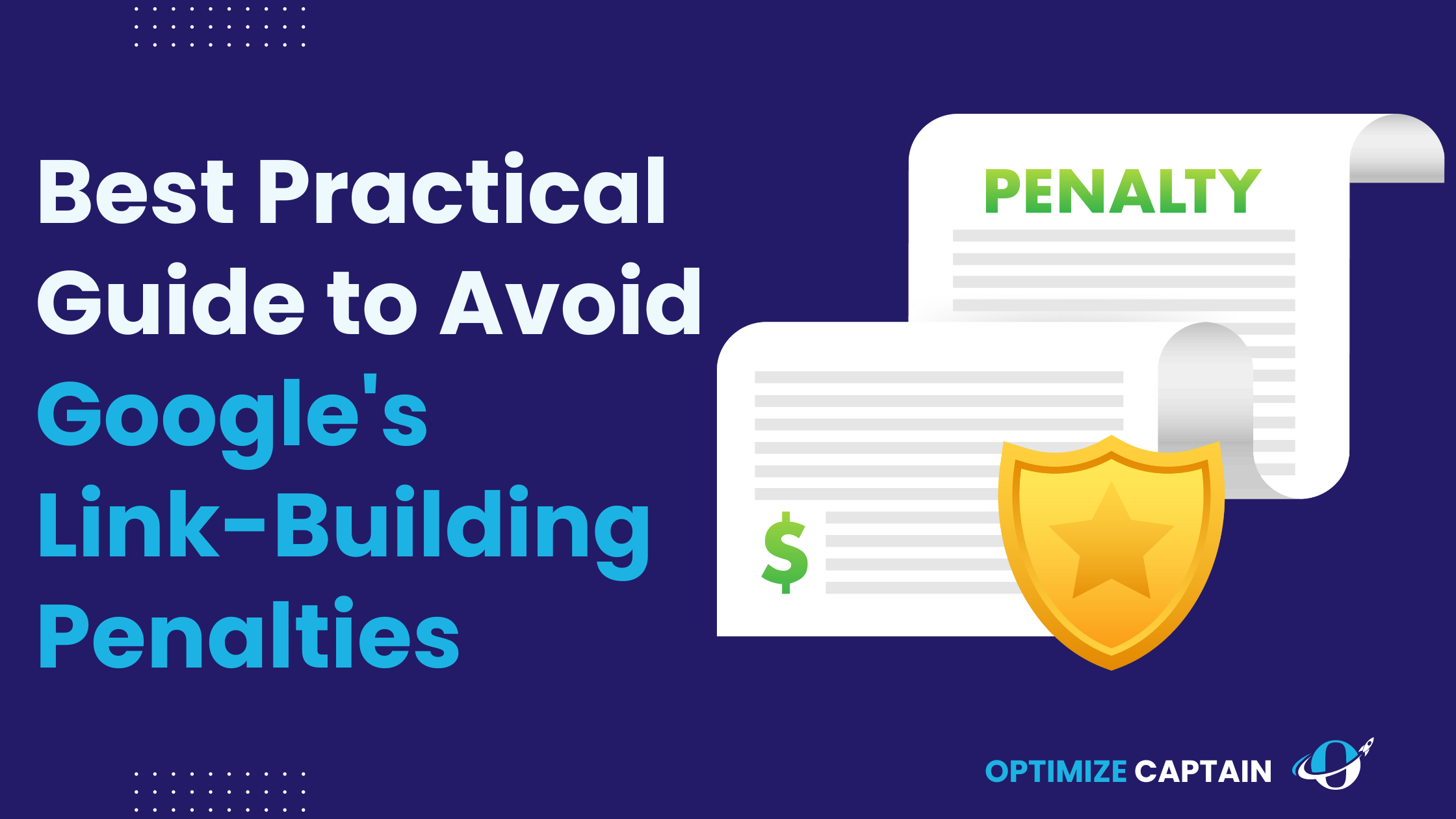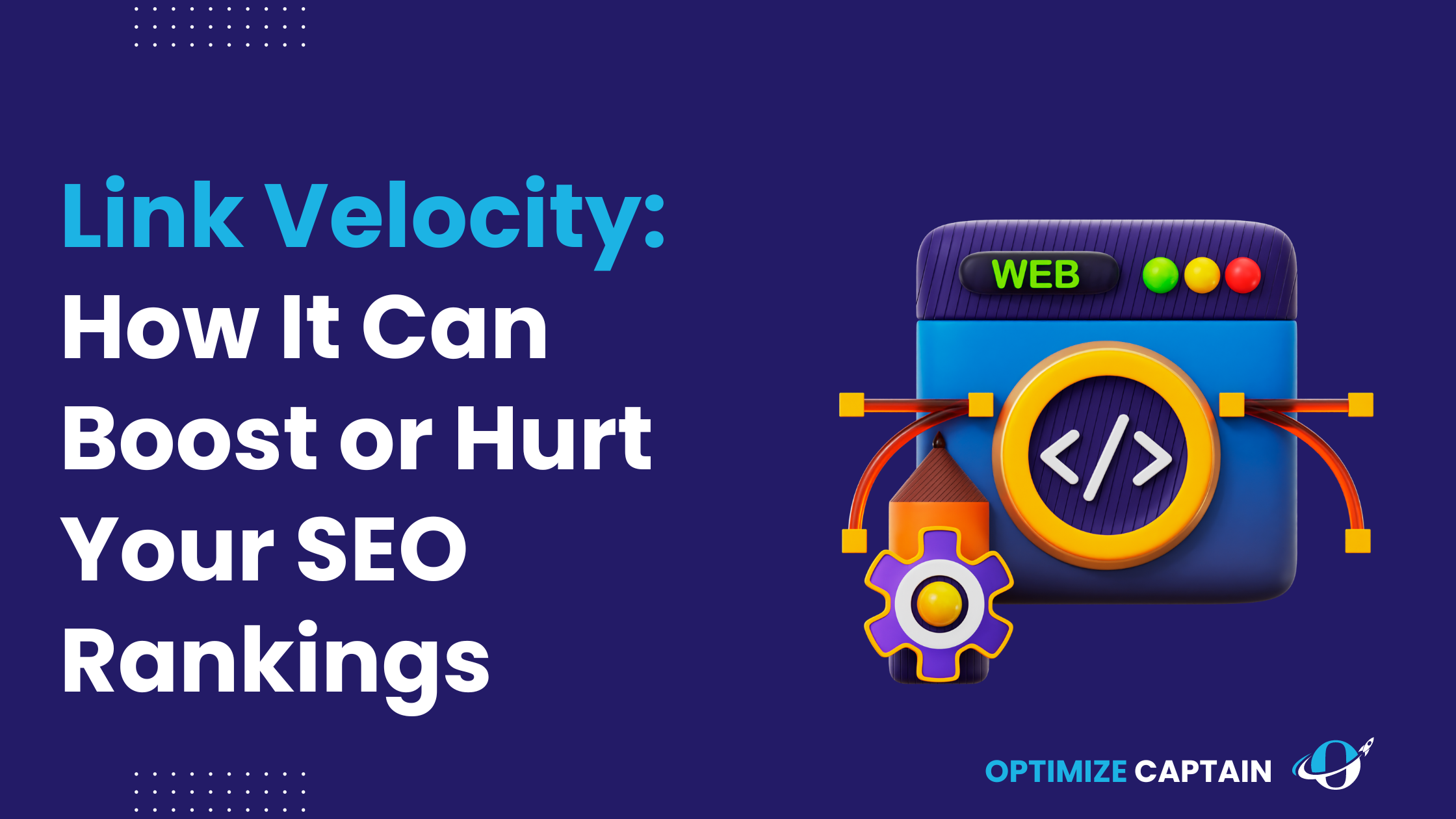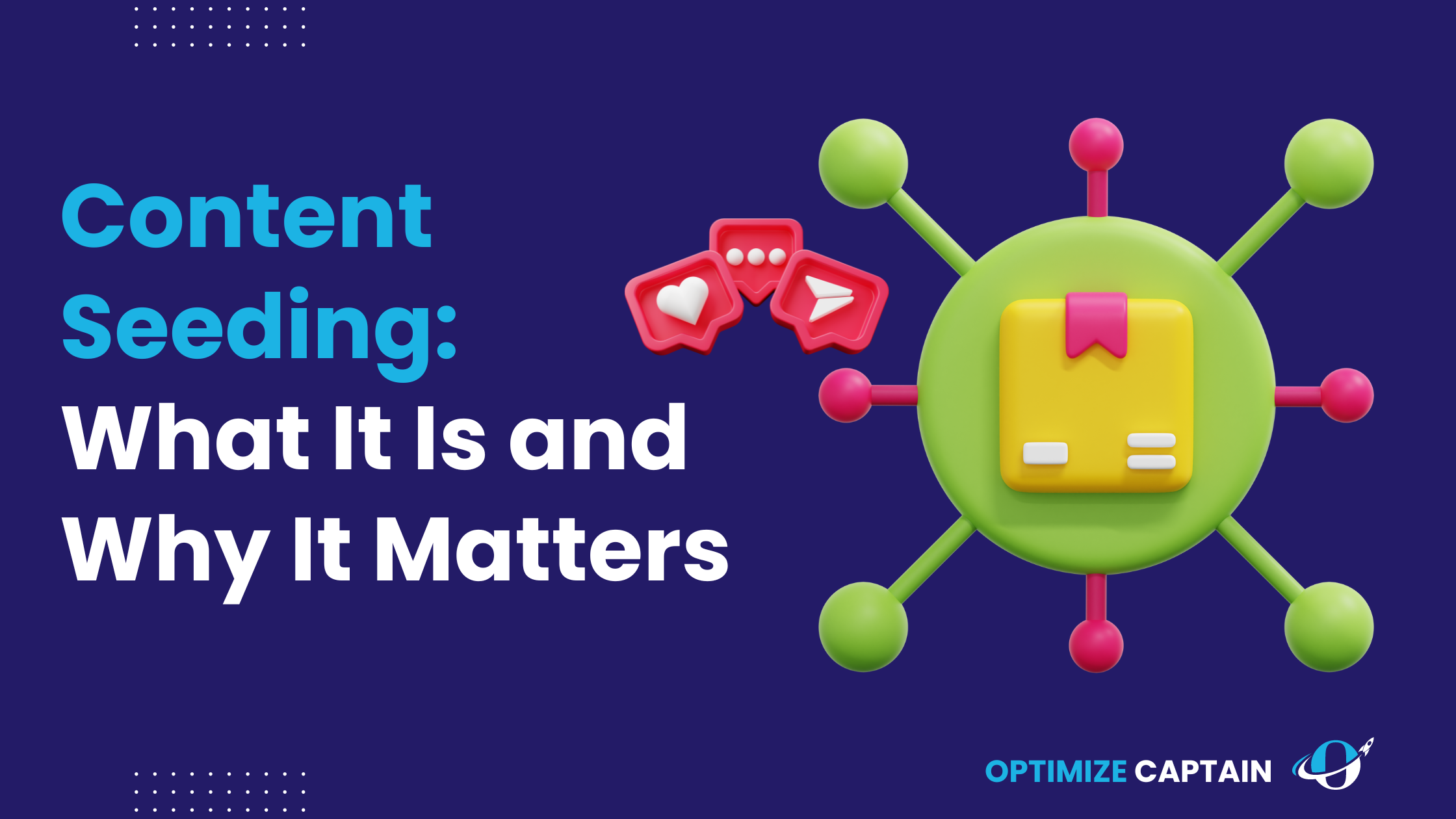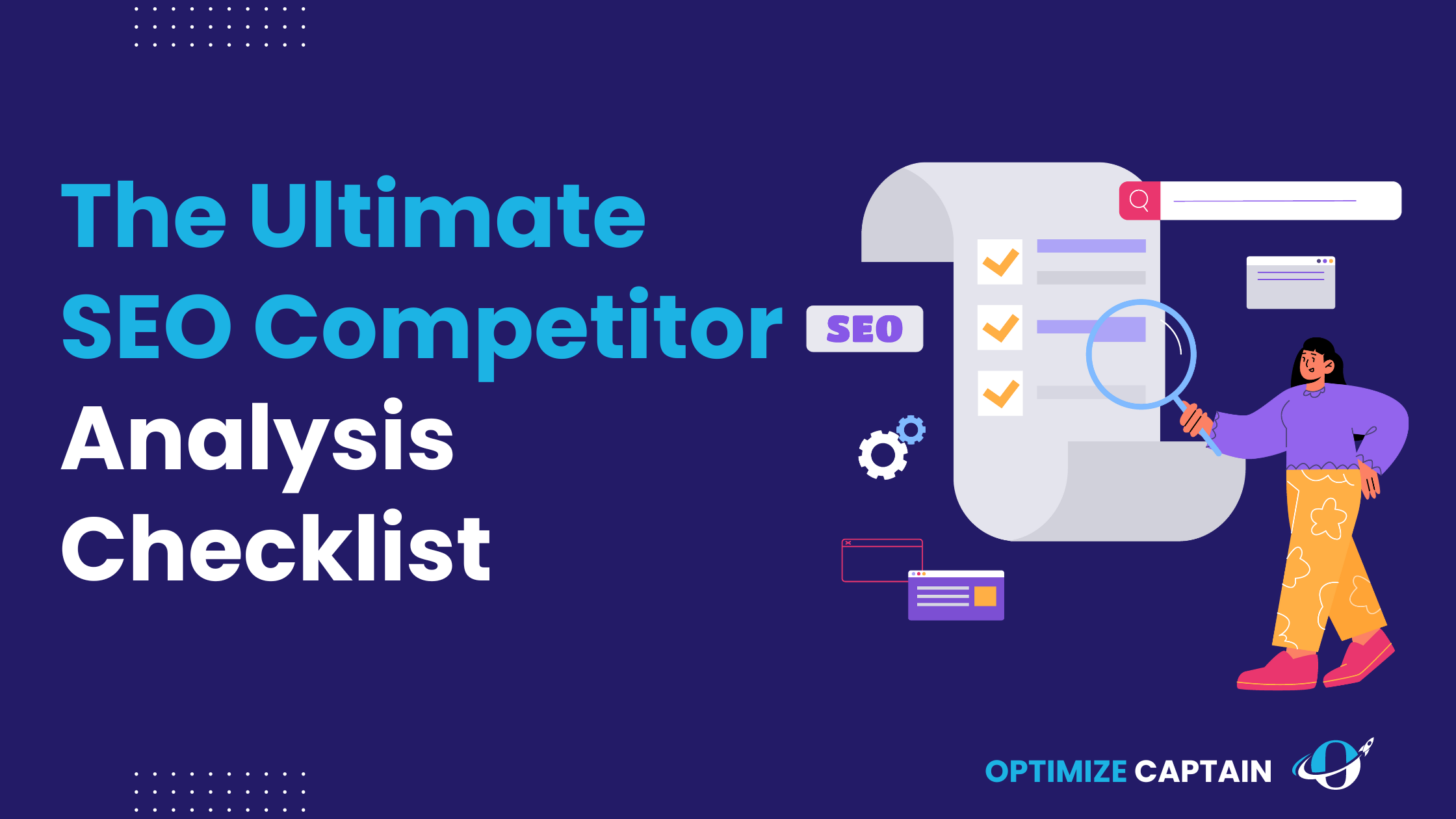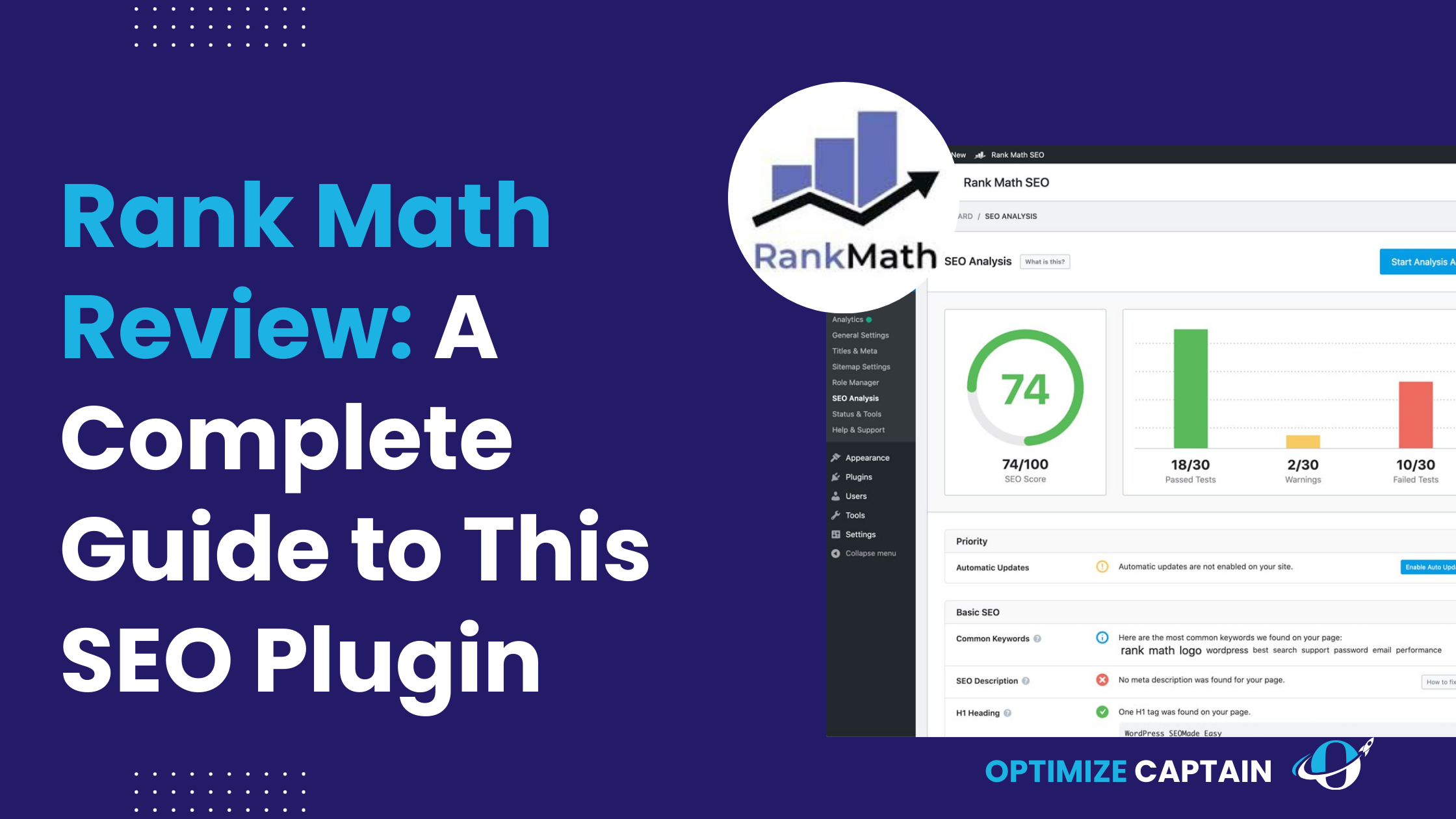Have you seen your website’s traffic drop suddenly? It’s a scary experience, right?
Link-building penalties from Google can be the reason.
The stakes are high: about 75% of users never scroll past the first page of search results.
If your site’s rankings drop, your organic traffic and revenue can take a big hit.
But don’t worry.
We’ll walk you through how to avoid these penalties and keep your SEO efforts safe. Let’s get started and keep your website healthy and visible.
What are Google’s Link-Building Penalties?
Link-building penalties are sanctions Google imposes when it detects manipulative or spammy link practices that artificially boost a site’s ranking. These penalties come in two primary flavours: algorithmic and manual.
Algorithmic Penalties: Google’s algorithms automatically apply these, like the infamous Penguin update. Penguin targets sites with manipulative link schemes and devalues their rankings.
Manual Penalties: These are imposed by Google’s human reviewers when they spot unnatural links pointing to your site. You’ll know if you’ve got one because Google will notify you via the Google Search Console.
Now you know the types, let’s talk about why you might get penalized.
Common Causes of Penalties:
- Buying Links: If you’re paying for links, you’re walking a fine line. Google wants links to be earned, not bought.
- Link Exchanges: “You link to me, and I’ll link to you.” Does this sound fair? Google doesn’t think so.
- Private Blog Networks (PBNs): These networks are set up solely to generate backlinks, and they’re a big no-no.
- Low-Quality Directory Links: Listing your site in every directory is a poor strategy. Google values relevance and quality over quantity.

How do you check if you have a link penalty?
Okay, so how do you know if Google has you in its crosshairs?
Using Google Search Console: Start here. You’ll find a notification under the ‘Manual Actions’ section if you’ve been charged a manual penalty.
Identifying Algorithmic Penalties: These are trickier. Look for significant drops in traffic or rankings, especially if they coincide with known algorithm updates. Tools like SEMrush and Ahrefs can help correlate these drops with specific updates.
Conducting a Link Audit: Perform regular link audits to identify potentially harmful links. Use tools like Ahrefs, SEMrush, or Google’s Search Console to analyze your backlink profile. Look for patterns of low-quality links, like those from irrelevant sites or with overly optimized anchor text.
How to Avoid Google’s Link-Building Penalties?
Avoiding Google’s link-building penalties is crucial for maintaining a solid online presence. Let’s dive into how to keep your link-building strategy clean and practical.
Focus on High-Quality Content
Creating valuable, informative, and engaging content is the cornerstone of effective link-building. High-quality content attracts natural backlinks from reputable websites, which helps improve your site’s credibility and rankings.
In-depth Articles: Write detailed articles on relevant topics in your industry. These should be well-researched and provide unique insights that readers find valuable.
Visual Content: Infographics, videos, and charts are highly shareable and can attract more backlinks due to their engaging format.
Original Research: Conduct surveys, case studies, and original research. Data-driven content is often referenced by other sites, earning natural backlinks.
When you produce content that provides genuine value, people naturally want to share and link to it. This organic approach is much safer and more effective than manipulating your way to higher rankings.
Earn Links Naturally
Natural link earning is all about creating content that people want to share and link to without you having to ask for it. Here are some strategies to ensure you earn links naturally:
Guest Blogging: Write guest posts for reputable blogs in your niche. Ensure the content is valuable and relevant to the blog’s audience. This helps you earn backlinks and establishes you as an authority in your field.
Content Promotion: Share your content on social media, forums, and industry platforms to increase its visibility. The more people see your content, the more likely it is to earn natural links.
Influencer Collaboration: Collaborate with influencers and industry experts to co-create content. Their endorsement can lead to high-quality backlinks from their followers and networks.
Natural link earning focuses on building genuine relationships and producing content others find worth linking to. This method ensures that your links are earned organically and are seen as valuable by Google.
Diversify Your Link Profile
A diverse link profile signals to Google that your links are natural and earned from various sources. Here’s how you can achieve this:
Variety of Sources: Get backlinks from blogs, news sites, industry directories, and forums. This diversity makes your link profile look more natural and reduces the risk of penalties.
Balanced Anchor Text: Use a mix of branded, generic, and keyword-rich anchor text. Avoid over-optimization by not using the same anchor text repeatedly.

White Hat Link-Building Strategies
White hat strategies adhere to Google’s guidelines and focus on earning links through ethical practices. Here are some proven white hat strategies:
Guest Blogging (with Caution): Writing for reputable blogs in your industry can earn you high-quality backlinks. Make sure your posts are high-quality and provide real value to the readers.
Building Relationships: Network with industry experts and influencers. Building genuine relationships can lead to natural backlinks as these experts mention and link to your content.
Using HARO: Help a Reporter Out (HARO) is a platform where journalists seek expert opinions. Providing valuable insights can earn you backlinks from high-authority sites.
Let’s take a moment to see this in action:

A big NO to Bad Links
Bad links can still appear in your backlink profile despite your best efforts. It’s crucial to identify and disavow these links to avoid penalties. Here’s how you can do it:
Identify Bad Links: Use tools like Ahrefs, SEMrush, or Moz to audit your backlink profile regularly. Look for links from spammy or irrelevant sites.
Contact Webmasters: Contact the webmasters of sites linking to you and request the removal of harmful links. Be polite and explain why the link is harmful.
Disavow Tool: If you can’t get the bad links removed, use Google’s Disavow Tool to tell Google to ignore them. This should be a last resort, as disavowing the wrong links can harm your site.
By regularly auditing your backlinks and disavowing harmful links, you can maintain a clean link profile and avoid penalties.
Staying Updated with Google’s Guidelines
Google’s guidelines continually evolve, and staying informed is essential to avoid penalties. Here’s how to keep on top of these changes:
Regular Reviews: Review Google’s Webmaster Guidelines to stay updated on acceptable link-building practices.
SEO News Sites: Follow reputable SEO news sites like Search Engine Land, Moz, and SEO Roundtable to keep up with the latest updates and trends.
Community Engagement: Participate in SEO forums and communities to learn from other professionals and stay informed about industry changes.
Staying informed about Google’s guidelines and industry trends helps you adapt your strategies and avoid potential pitfalls.
Creating Link-Worthy Content
Producing content that others naturally want to link to is the best way to avoid penalties. Here are some tips for creating link-worthy content:
In-Depth Articles: Write comprehensive, well-researched articles that provide value to your audience. These are more likely to be shared and linked to.
Visual Content: Infographics and videos are highly shareable and can attract many backlinks due to their engaging format.
Original Research: Conducting original research and publishing the results can attract links from sites referencing your findings.
Example: Imagine you create a detailed guide on the latest SEO trends, including original research and expert interviews. Your guide is widely shared and earns backlinks from various industry sites. Someone else publishes short, low-quality articles that provide little value, attracting few backlinks and many from dubious sources.
Avoiding Common Link-Building Mistakes
To ensure your link-building efforts are practical and penalty-free, avoid these common mistakes:
Over-Optimized Anchor Text: Using exact-match anchor text excessively can be a red flag for Google. Instead, use natural variations and branded terms.
Automated Tools: Avoid using tools that automatically generate links for your site. These tools often create low-quality links that can harm your SEO.
Link Farms: Link farms are groups of websites created solely to link to each other. Links from these sites are usually low-quality and can lead to penalties.
Avoiding these Link-Building mistakes helps you build a natural and healthy backlink profile that aligns with Google’s guidelines.
Monitoring and Maintaining Your Link Profile
Regular monitoring and maintenance of your link profile are essential to avoid penalties. Here’s how to keep your link profile clean:
Regular Audits: Conduct regular audits of your backlink profile using tools like Ahrefs, SEMrush, and Moz. Identify and address any issues promptly.
Set Up Alerts: Use tools to set up alerts for new backlinks. This way, you can quickly identify and address any potentially harmful links.
Engage with Your Community: Active engagement can help you earn natural backlinks. Participate in industry forums, comment on blogs, and be active on social media.
Following these steps and committing to ethical link-building practices can build a robust and penalty-free backlink profile. Stay informed, produce high-quality content, and focus on earning natural links to keep your SEO efforts on the right track.
How to Recover from Google’s Link-Building Penalties?
So, you’ve been hit. What now?
Steps to Recovery from Manual Penalties:
- Identify Harmful Links: Use Google Search Console and third-party tools to identify problematic links.
- Remove or Disavow Bad Links: Contact webmasters to remove these links or use the Disavow Tool.
- Submit a Reconsideration Request: Explain your actions and assure Google that you’ve cleaned up your act.
Recovering from Algorithmic Penalties: These don’t require reconsideration requests. Instead, clean up your link profile and wait for the next algorithm update. For example, an online retailer affected by a Penguin update recovered after cleaning their link profile and waiting for the next update.
Using Tools and Resources for Recovery: Tools like Link Detox, Moz, and Majestic can help analyze and clean up your backlink profile. If things need to be more organized, consider hiring a professional SEO expert.
How to Measure the Effectiveness of Your Link-Building Strategy?
Once your link-building strategy is up and running, measuring its effectiveness is crucial.
Key Performance Indicators (KPIs):
- Organic Traffic: Use Google Analytics to monitor changes in your organic traffic.
- Search Rankings: Track your keyword rankings using tools like Ahrefs or SEMrush.
- Backlink Quality and Growth: Monitor the number and quality of backlinks you earn.
Tools for Measuring Link-Building Success:
- Google Analytics: Track traffic, bounce rates, and conversions.
- Ahrefs and SEMrush: Monitor backlink profiles and track keyword rankings.
- Moz and Majestic: Use these tools for domain authority metrics and link analysis.
Adjusting Strategies Based on Data: Regularly review your data and tweak your strategy accordingly. If a particular type of content attracts more backlinks, produce more. Adapt to changes in Google’s algorithms and guidelines to stay ahead.
Conclusion
Remember, effective link-building is about quality, not quantity. Avoid shortcuts and focus on building a robust, ethical strategy. By following the guidelines and best practices we’ve discussed, you can avoid penalties and build a robust and sustainable link profile. Keep learning, stay updated, and continuously refine your approach. Your SEO success depends on it.
Happy linking!
Google’s Link-Building Penalties FAQ’s
1. What are the most common causes of Google’s link-building penalties?
Google’s link-building penalties are often caused by buying links, which violates their guidelines, and excessive link exchanges, which are seen as manipulative. Using Private Blog Networks (PBNs), created solely for backlinks, is risky and easily detected. Additionally, acquiring links from low-quality or irrelevant directories can harm your SEO and attract penalties.
2. How can I identify and remove toxic backlinks from my website?
To identify and remove toxic backlinks, start by auditing your backlink profile using tools like Ahrefs or SEMrush to find harmful links. Reach out to the webmasters of these sites and request the removal of toxic links. If unsuccessful, use Google’s Disavow Tool to tell Google to ignore them, but use this as a last resort to avoid harming your SEO.
3. . What are some effective white hat link-building strategies?
Effective white hat strategies include guest blogging for reputable blogs, building genuine relationships with industry experts, and using Help a Reporter Out (HARO) to provide expert insights to journalists. Creating quality content such as comprehensive articles, infographics, and original research also naturally attracts valuable backlinks.

